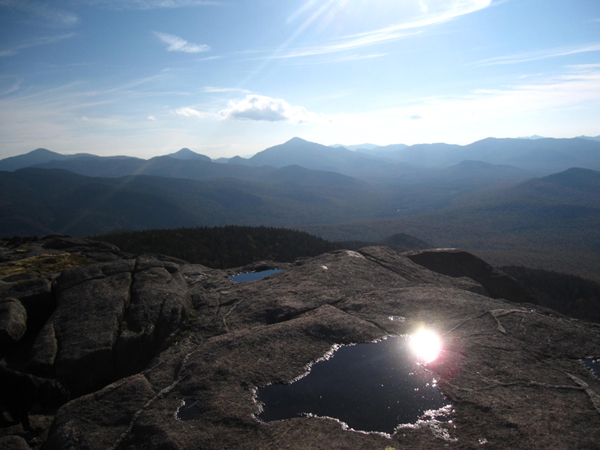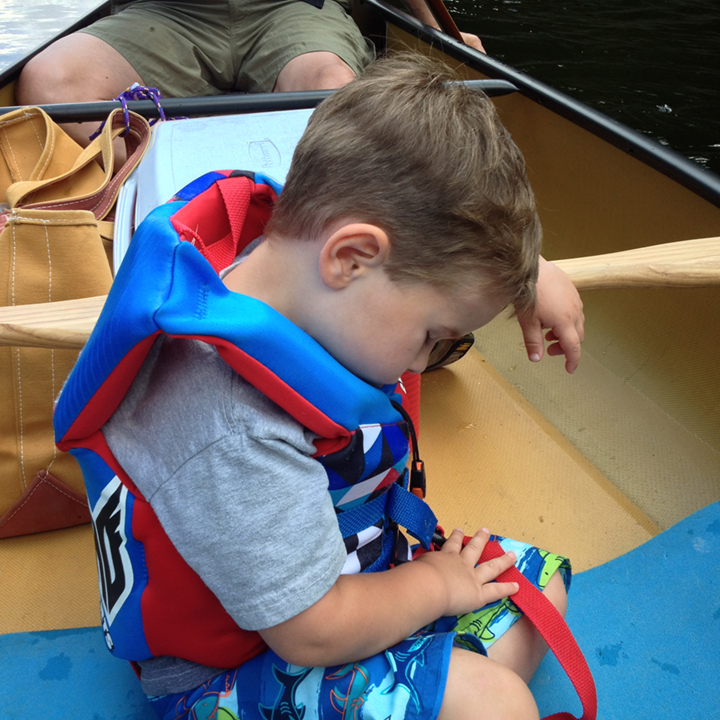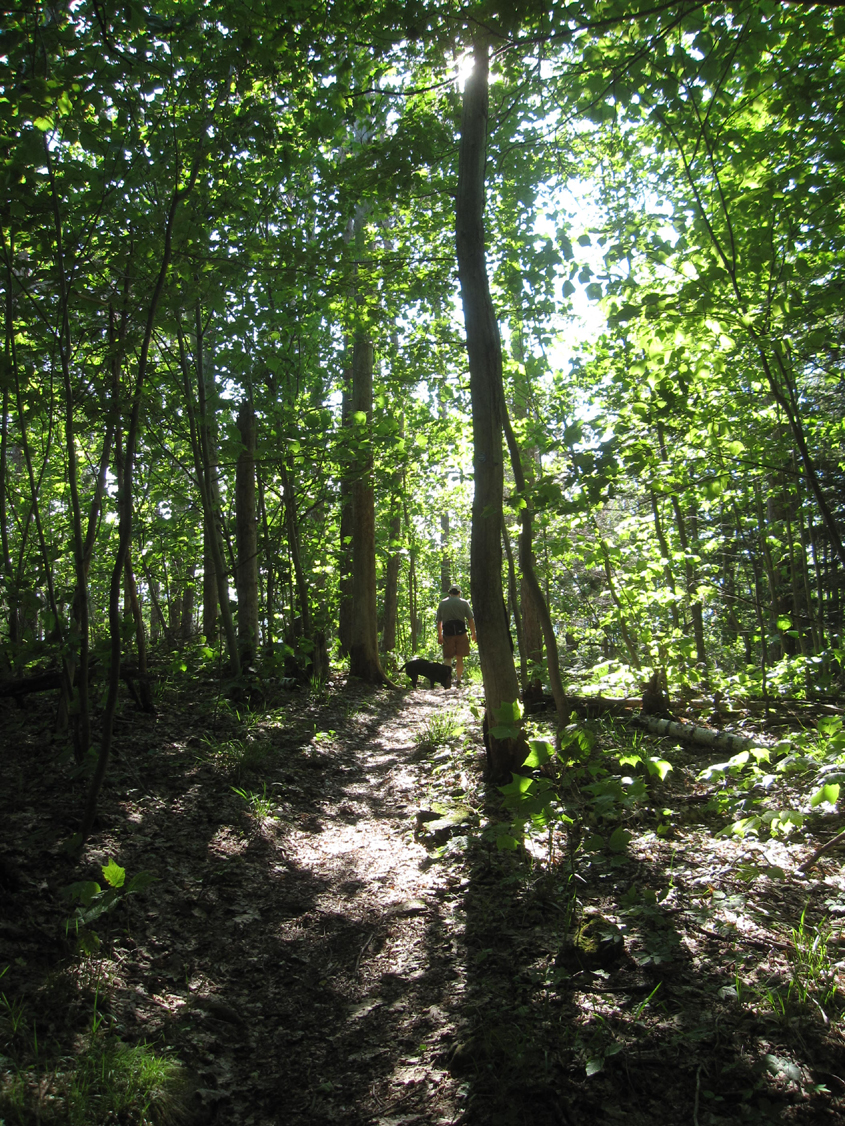Take a hike–doctor’s orders
Part of the healthcare series, “A picture of health in northern New York.”

Experts tell us just looking at a picture of nature like this one from the summit of Cascade Mountain, is good for us. Photo: Joann Sandone Reed
Maria felt under the weather; she was tired and lethargic. Despite her normally sunny disposition she had little enthusiasm for life. She had a tough time mustering any strong feeling, good or bad, about her two young children, happy marriage, or her home nestled in the stunning Adirondack Mountains of northern New York. No matter how much she rested, she could barely get through “Goodnight Moon” without falling asleep before the kids. She wasn’t despondent, but she had the blahs and wanted to feel good again. Maria decided was she going to the doctor to ask him for the pills that made people feel better – an anti-depressant.
A pill to the rescue?
This was 1988 and Prozac was just hitting its stride. The drug was approved for sale in the United States in 1987 and annual sales reached $350 million within a year. Her friends were talking about it; one of them even lost weight from taking the pill. Maria knew exactly what to ask for and prepared her speech as she sat in her primary care physician’s office. In order to protect her privacy, “Maria” is the pseudonym for a woman who told me her story nearly three decades ago.
Go jump in a lake and call me in the morning
Maria was surprised and a little disappointed when her primary care doctor gave her a different prescription than she expected: “Take a walk, go for a swim, get outside every day and see me in two weeks.” She was busy and looking for a quicker fix, but followed his advice. It worked. After two weeks of daily walking outdoors, Maria was starting to feel better. She continued to spend more time outdoors and chose not take to anti-depressants.

A brisk swim in a clear mountain lake is an exhilarating way to get a dose of nature. Photo: Edward Reed
Maria’s doctor was wise but unusual for those days. Thanks to interested scientists and academics, we now know his prescribed cure–spend time outdoors–enhances human well-being and even cures many ills.
Data tells the story
Reams of research validate the gut feeling of outdoors nuts everywhere–exposure to nature promotes well-being. Recent empirical data confirms, in addition to getting you out of her hair, your grandmother also instinctively knew it was good for you when she told you to go play outside.
These days, prescription strength Nature even has its own commercial.
Nature for physical health
The equation exposure to nature leads to physical activity, which leads to better health, makes sense. But it turns out, just being near or in sight of the natural world, without doing anything, is remarkably healing. Remarkable because patients who gazed out at a natural scene were four times better off than those who faced a wall.
In one of the most famous research reports on the effect of nature on physical health, in 1984 as published in the journal, “Science,” researcher Roger S. Ulrich, Ph.D., learned the views surgical patients saw out their hospital room window influenced healing. Patients who had a view of trees during their recovery had shorter postoperative hospital stays, fewer negative evaluative comments from nurses, took fewer moderate and strong analgesic doses, and had slightly lower scores for minor post-surgical complications than patients who looked out the window at a brown brick wall. On average, the patients who viewed the brick wall took a full day longer to be well enough to go home.

Children who play outside are happier and healthier. Photo: Joann Sandone Reed
Children thrive in nature
Time spent outdoors is good for humans of all ages. However, because grown-ups are the busy ones who don’t have recess, it is tempting to pretend only adults suffer from Nature Deficit Disorder (NDD). Unfortunately, this is not the case. Children spend more time indoors than ever before. A child is six times more likely to play a video game on a typical day than to ride a bike, according to surveys by the Kaiser Family Foundation and the Center for Disease Control and Prevention.
In another incredible study, new research revealed kids who play outdoors have better vision. The study published last fall in the Journal of the American Medical Association (JAMA), “Effect of Time Spent Outdoors at School on the Development of Myopia Among Children in China: A Randomized Clinical Trial,” showed the addition of 40 minutes of outdoor activity at school compared with usual activity resulted in a reduced incidence of myopia over the following 3 years.
Wait, there’s more. Researchers in New Jersey found low-income children who have a park larger than 1 acre within a .5-mile radius of their home are less likely to be overweight or obese.
Nature for your noggin
As anyone who has ever gone for a hike or tended a garden knows, the verdant landscape and a whiff of fresh air on a dewy summer morning clears the head and refreshes the soul like nothing else. The great feeling we get after spending time outdoors is not a product of our imagination. Empirical data backs up our feelings. A new study found walking in nature could lead to a lower risk of depression. In the paper published in “Proceedings of the National Academy of Sciences of the United States of America,” researchers stated, “Participants who went on a 90-minute walk through a natural environment reported lower levels of rumination and showed reduced neural activity in an area of the brain linked to risk for mental illness compared with those who walked through an urban environment.”
Hanging out in nature not only helps you chill out, it can make you smarter. In a new report published in Landscape and Urban Planning, researchers found a 50-minute nature walk improved cognition in 60 participants. Subjects had no bump in brain skills when they went for a walk in an urban area.
There is more research than we cite in one article and the results are indisputable: exposure to nature and the natural world is good for humans.
Access to nature in northern New York
The goods news for residents is there is no shortage of green in northern New York. Eight-five percent of all wilderness area in the eastern United States is located in the Adirondack Park alone, and the area outside of the Park’s blue line is spacious and rural. Healthcare officials in the region recognize an asset when they see it and work hard to integrate the relative easy access to outdoor activity into their healthcare interventions.
Margot Gold is Executive Director at the North Country Healthy Heart Network, Inc., an organization tasked with helping people stay healthy. Gold and her team design and implement strategies to help decrease the incidence of cardiac disease, stroke, and related chronic disease in northern New York State. The not-for-profit covers a large green geographic region that runs 150 miles north to south from the Canadian border to the Village of Speculator, and 100 miles west to east from the Village of Inlet to Lake Champlain.
The more active we are, the healthier we become, and we know getting outside leads to being more active.
Gold said outdoor activity is an integral part of the lifestyle changes her group advocates. She said, “We know lifestyle behaviors–what we eat, what we breathe, and what we do–impact health. We can’t control our health genetics, but we can control these factors. We help people work on these lifestyle factors.“ Many of the initiatives underway at the Healthy Heart Network, including “Get Out & Live North Country,” “Essex County Complete Streets Coalition,” “Malone Complete Streets Partnership,” and “Saranac Lake Trails Plan,” encourage people to get outdoors. Gold said the programs are designed to get kids and adults outside in a safe way. She said, “There is an old truism in our business, ‘Make the healthy choice the easy choice,’ and we are trying to make spending time in nature the easy choice.”
In a huge change from three decades ago, state agencies, the federal government, and insurance companies have jumped on the prevention bandwagon in recent years and now fund programs like those managed by Gold and her team at the Healthy Heart Network. If we heed the old adage, “Follow the money,” we learn outdoor physical activity is getting its day in the sun. “The more active we are, the healthier we become, and we know getting outside leads to being more active,” Gold said. Her group also works with schools to assess how physical activity is built into the school day. They then develop a comprehensive plan to insure students get the outdoor physical activity they need.
Read more articles on healthcare, A picture of health in northern New York, and A Picture of health in northern New York: the players, how they interact, and a free dose of medicine.
Joann Sandone Reed is owner and principal of JSR Associates, a communications firm with special expertise in the healthcare and life sciences industry.
Tags: picture of health











I love the smile of the kid on the sled.
There is no doubt he’s having fun.
This a great story and one that, sadly, needs to be repeated over and over. Now that I live in Silicon Valley, I have to work harder at getting out into nature (but I manage). As they cram more and more people into a finite area (because there are jobs here but out-dated transportation infrastructure), I can’t help but wonder if people will start reacting like laboratory rats whose personal space is continuously reduced.
A certain biologist I know believes in your laboratory rat theory Ann. Since his opinion holds sway with me, I live in the Adirondacks.
As doctors and patients grow more savvy about the benefits of activity, this article is a good reminder about the benefits of beautiful, natural surroundings. That’s something that society undervalues because we’re not good at putting a price on it.
Thanks Jean, maybe society undervalues nature because no one has figured out how to patent it. Yet.
Nice article Joann. You know that when I feel blue, getting out for a hike, even if only a 30 minute hike, makes all the difference. Now living in Maryland, I chose a location that is near hiking trails so I can be sure to get my dose of nature, but Oh how I miss the Adirondacks.
Thank you Debra. The Adirondacks are indeed a great place to get a dose of the outdoors, but the nice thing about Mother Nature is, no matter where you go, there she is!